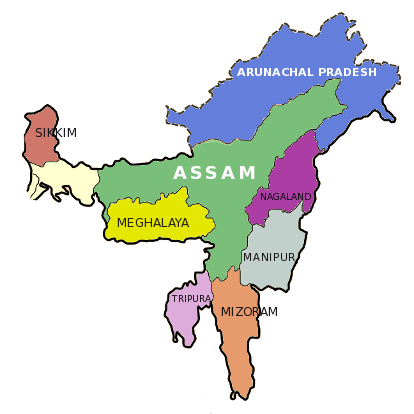Note4Students
From UPSC perspective, the following things are important :
Prelims level: Read the attached story
Mains level: Assam as the centre-stage of disputes

Assam is at the centre of a fresh inter-State border row in the northeastern region. The Mizoram government has sought the revision of the boundary with Assam, based on the Bengal Eastern Frontier Regulation (BEFR) of 1873 and the Inner Line of the Lushai Hills Notification of 1993.
Background
- Since 1962 most of the state borders of states carved out of Assam were divided following the myopic vision of the Central government.
- On ground these borders still do not run in sync with the tribal territories and identities, creating repetitive conflicts in the region and disturbing its peace.
- Assam finds itself at the center of all the conflicts since most of the neighboring states were carved out of its territory since independence.
- This was done to consolidate the Indian Union at the time by catering to the aspirations of the local tribes and including them in the mainstream by giving them independent statehoods.
What is the dispute?
- Mizoram shares a 123-km border with southern Assam and has been claiming a 509-square mile stretch “occupied” by the neighbouring State.
- Mizoram used to be the Lushai Hills district of Assam before being made a Union Territory in 1972 and a State in 1987.
- Both States have been disputing an extensive stretch of this boundary.
About Bengal Eastern Frontier Regulation
- The Inner Line Regulations, commonly referred to as the Inner Line Permit system (ILP), first gained legal effect through the Bengal Eastern Frontier Regulation, 1873.
- At present the BEFR continues to apply, but only in present-day Arunachal Pradesh, Nagaland and Mizoram.
- It had been lifted in the whole of Assam, as well as the entirety of present-day Meghalaya.
- The BEFR allows Arunachal Pradesh, Manipur, Mizoram and Nagaland not to let non-resident Indians in without an inner-line permit for a temporary stay.
Present status of ILP
- The Foreigners (Protected Areas) Order, 1958 is the modern embodiment of the ILP.
- This Order was passed in furtherance of the Foreigners Act, 1946.
- The Order defined the ‘inner line’ throughout present-day India starting from Jammu and Kashmir and ending at Mizoram.
- This inner line is different from the one envisioned in the Bengal Frontier Regulations.
- This line represents the furthest point up to the international border where a foreigner can visit on the strength of a visa alone.
Get an IAS/IPS ranker as your 1: 1 personal mentor for UPSC 2024
